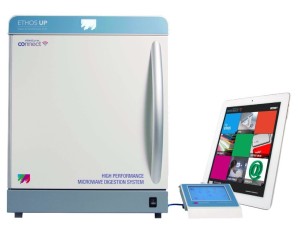
Enhancing Metal Analysis Accuracy with Microwave Digestion Systems
Introduction
Accurate metal analysis is crucial across industries such as environmental science, pharmaceuticals, food safety, and mining. However, achieving precise results requires efficient sample preparation methods. One of the most advanced techniques for preparing samples for metal analysis is microwave digestion. This method ensures rapid, complete, and reproducible digestion of various sample matrices, improving analytical accuracy and efficiency.
This blog explores the principles, benefits, and applications of microwave digestion systems in metal analysis and how they compare to traditional digestion methods.
Understanding Microwave Digestion
Microwave digestion is a closed-vessel sample preparation technique that uses microwave energy to accelerate the decomposition of organic and inorganic materials in acid solutions. This process is essential for preparing samples before analysis by techniques such as Inductively Coupled Plasma Optical Emission Spectroscopy (ICP-OES), Inductively Coupled Plasma Mass Spectrometry (ICP-MS), and Atomic Absorption Spectroscopy (AAS).
The system operates by applying microwave radiation to heat acid mixtures within pressurized vessels, enhancing the digestion rate while maintaining a controlled and safe environment. The result is a fully digested sample in a fraction of the time required by conventional methods.
Key Benefits of Microwave Digestion
1. Faster Digestion Times
Traditional open-vessel digestion methods, such as hot plate or block digestion, can take several hours to break down complex samples. Microwave digestion systems significantly reduce processing times, often completing digestion in 15 to 45 minutes, depending on the sample type.
2. Improved Sample Throughput
With the ability to process multiple samples simultaneously, microwave digestion enhances laboratory productivity. Some advanced systems can handle up to 40 samples per run, making them ideal for high-throughput environments.
3. Enhanced Accuracy and Precision
Microwave digestion provides a uniform temperature and pressure environment, ensuring complete digestion of samples. This minimizes the risk of incomplete digestion, which can lead to inaccurate metal concentration readings.
4. Reduced Acid Consumption
Compared to conventional digestion, microwave-assisted methods require less acid, reducing reagent costs and minimizing the risk of contamination from excessive acid use.
5. Better Safety and Environmental Compliance
The closed-vessel design of microwave digestion systems prevents acid vapors from escaping, ensuring laboratory personnel’s safety and reducing environmental impact. Additionally, pressure and temperature controls lower the risk of accidents related to acid handling.
Applications of Microwave Digestion in Metal Analysis
1. Environmental Testing
Regulatory agencies such as the EPA (Environmental Protection Agency) mandate stringent testing of soil, water, and air samples for heavy metals. Microwave digestion allows for the precise breakdown of environmental matrices, enabling accurate metal quantification in compliance with regulatory standards.
2. Food and Beverage Industry
Metal contamination in food and beverages poses serious health risks. Microwave digestion is widely used for preparing samples for heavy metal analysis in foods, ensuring consumer safety and regulatory compliance with organizations like the FDA and EU Commission.
3. Pharmaceutical and Biomedical Research
Pharmaceuticals require strict control over metal impurities, as outlined in guidelines such as ICH Q3D (Elemental Impurities). Microwave digestion allows for precise digestion of tablets, powders, and biological fluids, ensuring compliance with pharmaceutical standards.
4. Mining and Geology
Accurate determination of metal concentrations in ores and minerals is crucial for mining operations. Microwave digestion enables efficient sample preparation, providing reliable data for metal extraction and quality assessment.
5. Industrial and Material Science
Industries such as metallurgy, semiconductors, and automotive manufacturing require metal composition analysis in alloys and coatings. Microwave digestion ensures uniform sample decomposition for accurate analysis.
Choosing the Right Microwave Digestion System
Selecting the appropriate microwave digestion system depends on factors such as sample type, required throughput, acid compatibility, and budget. Some key considerations include:
• Pressure and Temperature Control: Ensure the system offers real-time monitoring to prevent over-pressurization or overheating.
• Vessel Capacity: Choose a system that accommodates the desired sample volume and batch size.
• Acid Resistance: Ensure materials like Teflon or quartz are used for corrosion resistance.
• User Interface and Automation: Advanced models offer programmable settings, reducing manual intervention and improving reproducibility.
Best Practices for Microwave Digestion
To achieve the best results with microwave digestion, consider the following tips:
1. Use High-Purity Reagents: Contaminants in acids can interfere with metal analysis.
2. Optimize Acid Mixtures: The choice of acid (e.g., HNO₃, HCl, HF) depends on the sample composition.
3. Follow Proper Vessel Loading Techniques: Overloading can cause uneven digestion and pressure build-up.
4. Ensure System Maintenance: Regular cleaning and calibration extend equipment life and ensure reliable results.
5. Follow Manufacturer Guidelines: Adhering to recommended parameters prevents vessel damage and ensures safety
